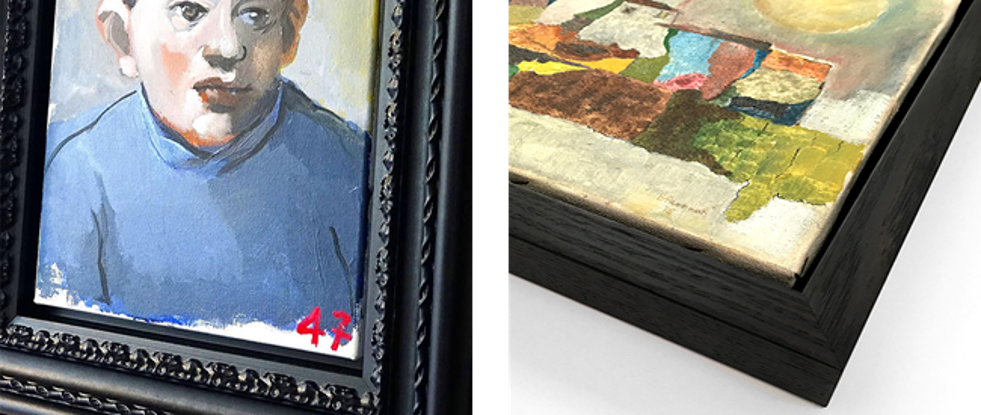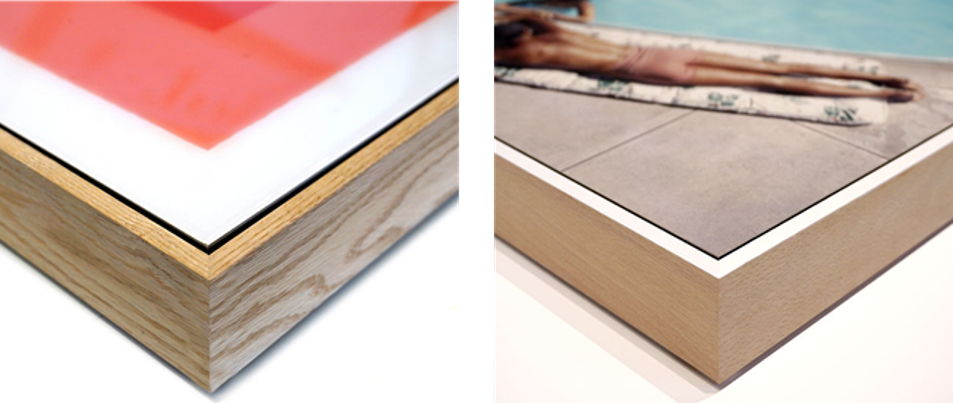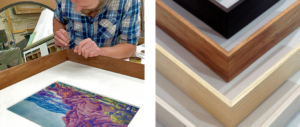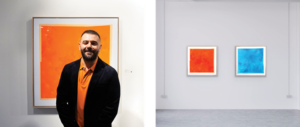Autumn News Update: Wet Weather Alert
Water damage triage tips and contacts
As thousands of people across NSW struggle with the impact of the recent storm events across the East Coast, I’d like to take this opportunity to acknowledge the loss and devastation that many people are dealing in the wake these recent floods, and also express our appreciation for the hundreds of SES workers and community volunteers who have been assisting with the recovery.
In this newsletter we discuss:
- Water damaged artwork triage
- Wet weather checklist – are your artworks safe and dry?
- Acme Framing and COVID in 2021 – appointments encouraged
- Float-frames – not just for works on canvas
- Rick Carlino solo exhibition at .M Contemporary
- Fresh from the mill – Acme Wedge in Australian Blackwood
Water damaged artwork triage
In the clean-up after the March flood events, as we assess the impact of the floods – the question of what can be salvaged will inevitably arise.
We recommend professional art conservators as the first point of contact for advice on how to determine which works should be sent for conservation and what you can do to minimise the effects of water damage in the meantime.
It’s important to get advice from an art conservator as soon as possible – as mould, and brackish water can cause significant damage to your artworks in a short amount of time, especially in warm weather.
Picture Framing health check for damp weather conditions
Even if there is no immediate water damage to your artworks, with damper than usual conditions following the recent storm events – we recommend checking your walls for damp areas that could affect work hung on your walls, and review the condition on any valuable works in your collection.
Here’s are a few tips for reviewing the condition of framed works on your walls, as well as unframed work you have stored away.
Framed artworks: photos, works on paper etc.
Backing boards – look for signs of mould and moisture on the back of your framed work. At Acme Framing we use 5mm polypropylene CorFlute for most of our work, it’s acid-free and highly stable, providing an excellent moisture barrier. MDF backings whilst very common, are more permeable to moisture, and the wood pulp they are made from, can over time, leach acid into the matts and artwork.
Framing tape – provides a moisture barrier and locks out potential insect intruders. Check for loose tape and replace if needed, and inspect the framed work for any insects that may have entered through the loose tape.
Bump-ons – these small, inexpensive cork, felt or silicon disks attach to the bottom corners of your frames, and create a gap for air to circulate between your artwork and the wall it is hanging on. They can be purchased from most hardware stores.
Artwork stored in tubes and folders – avoid storing work in cardboard tubes! Cardboard breaks down over time, leaching damaging acid into your artwork. Check artwork in folders is buffered between sheets of acid free tissue or cardboard.
Instead of carboard tubes – store your artworks flat, inside acid-free folders, that you can be made with polypropylene CorFlute sheeting (available from hardware stores), bound with tape. Store work inside the folders between sheets of acid-free tissue paper that can be purchased from your local art supply shop.
For larger collections of works on paper – you may want to invest in a solander box. These are acid-free print boxes with hinged front panels that can be purchased from art conservation suppliers. These boxes allow many works on paper to be stacked loosely inside, between sheets of acid-free tissue/paper or rag mat cardboard. They protect your work from impacts, moisture, and acid leaching from adjacent materials.
Acme Framing and COVID in 2021 ‑ appointments encouraged
Since we began doing consultations by appointment, as a way to limit the number of customers in our show room at the same time, we have been pleased with the positive response from customers so far. Those of you who have visited our showroom on a Saturday before COVID, will know how busy we can get – since shifting to appointments we’ve been able to eliminate. Whilst no longer essential – we still encourage you to contact us to schedule an appointment – to get the most from your time with us. If you are walking by and would like to pop in and get some advice or just look around – by all means come inside and see if we are available. We are open as usual, weekdays and Saturdays. Opening times listed the bottom of this email.
Float-frames: not just for works on canvas!
Originally developed for artworks painted or printed on canvas, float-frames (also known as floater-frames or tray-frames) create the impression that the artwork is floating inside the picture frame without touching it, allowing viewers to see the front of the work in its entirety.

At Acme Framing we specialize in customised timbre frames including hand-stained and waxed finishes, as well as painted detailing and frame combinations (stacked-frames).
Whilst usually plain in design, float-frame mouldings can also be ‘stacked’ with more ornate mouldings to create evoke
a more historic aesthetic, as can be seen in the above portrait painting by McLean Edwards (left) – where we have stacked a simple black float-frame with an ornate, classically styled moulding in a restrained satin-mat black finish. In the example on the right, we’ve stacked the float-frame with a hand-stained and waxed Tasmanian oak box frame.
Beyond their use for artworks on canvas, float-frames can also be an effective framing solution for block-mounted and face-mounted prints, and other artworks where glass or acrylic glazing is not required.
The above examples show float frames used for an epoxy-resin painting by Rick Carlino (left), and a Slim Aarons print (right) that has been dry-mounted onto Alupanel and then float-framed with a moulding that contrasts natural timber with a crisp, white-painted face.

Fresh from the mill – Acme Wedge in Australian Blackwood
Acme Framing’s custom-milled ‘wedge’ profile is once again available in Australian Blackwood (Acacia melanoxylon).
Australian Blackwood is a fast-growing tree that lives up to 50 years, and is native to Tasmania and South Eastern Australia. It is a highly sought timbre with a grain that can range in colour from a deep reddish brown to grey or golden straw.

The Blackwood version of our wedge frame has long been prized by our clients for its rich red-brown colour, and unique grain.
The above image of an original water colour by Albert Namatjira framed in the Blackwood version of Acme Wedge demonstrates it’s unique combination of warmth, and elegant modern sophistication.
Rick Carlino solo exhibition at .M Contemporary

We recently had the pleasure of framing a collection of stunning geometric pigmented epoxy-resin works by Sydney artist Rick Carlino currently on view at .M Contemporary in Darlinghurst. Created with layers of high-gloss pigmented epoxy resin, and framed by Acme in American White Oak float-frames, this new body of work offers a contemporary interpretation of the Modernist square. Rick’s exhibition continues to April 4th.
